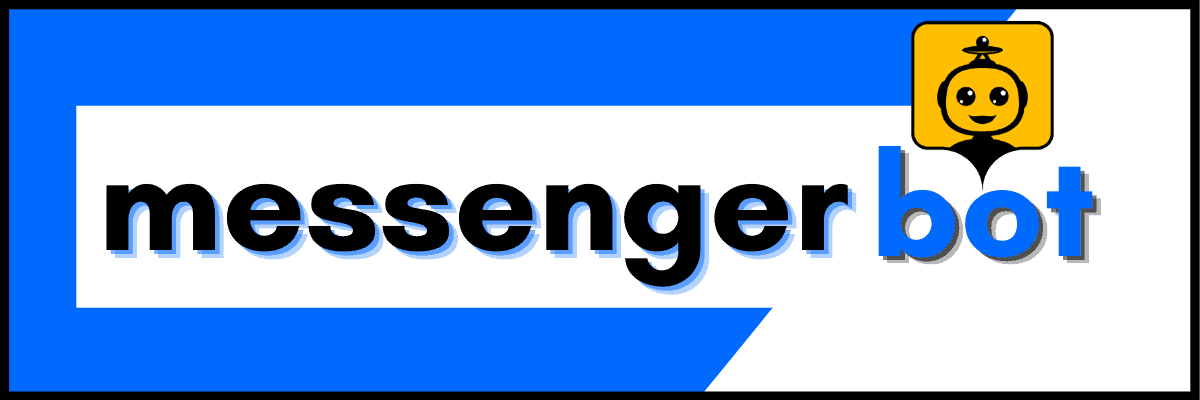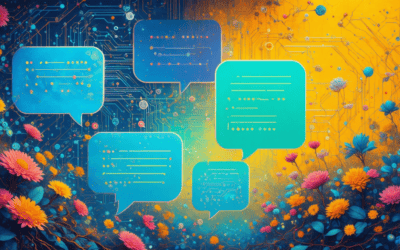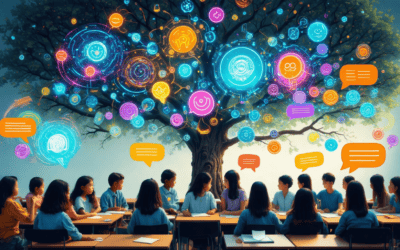In today’s fast-paced world, businesses are constantly seeking innovative ways to enhance customer engagement and deliver exceptional service. Conversational AI SMS, a cutting-edge technology that combines the power of artificial intelligence with the ubiquity of text messaging, is revolutionizing the way companies interact with their customers. By leveraging advanced natural language processing and machine learning capabilities, conversational AI SMS platforms enable businesses to provide seamless, personalized, and intelligent text-based interactions, streamlining customer support and elevating the overall customer experience. As consumers increasingly demand convenience, responsiveness, and around-the-clock availability, conversational AI SMS emerges as a game-changer, offering a seamless bridge between human-like conversations and the efficiency of automated systems.
What is a conversational SMS?
Conversational SMS, often referred to as two-way SMS or text messaging, is a powerful communication channel that empowers businesses to engage in real-time, back-and-forth text conversations with their customers. Unlike traditional one-way SMS marketing, conversational SMS enables a seamless exchange of messages, mimicking a natural dialogue. This interactive approach offers numerous advantages:
Definition and overview of conversational SMS
At its core, conversational SMS is a two-way communication channel that allows customers to respond, ask follow-up questions, or provide additional information, fostering a more personalized and engaging experience. By leveraging the power of real-time messaging, businesses can establish a direct and efficient line of communication with their audience, enhancing customer satisfaction and building stronger relationships.
Benefits of conversational SMS for businesses
- Enhanced Customer Engagement: Customers can respond, ask follow-up questions, or provide additional information, fostering a more personalized and engaging experience. According to a study by Gartner, customers who engage in conversational SMS have a higher likelihood of becoming loyal advocates for a brand.
- Efficient Communication: Conversational SMS allows agents to handle multiple conversations simultaneously, streamlining customer support and increasing productivity. The same Gartner study revealed that agents can handle up to 20 concurrent SMS conversations compared to only 4-5 voice calls.
- Context Preservation: The conversation thread is maintained, ensuring that agents have access to the full context of the interaction, eliminating the need for customers to repeat information and providing a seamless experience.
- Omnichannel Integration: Conversational SMS can be integrated with other communication channels, such as chatbots, voice assistants, and live chat, providing a seamless omnichannel experience for customers.
- Cost-Effectiveness: SMS is a cost-effective communication channel, making it accessible to businesses of all sizes and industries, particularly those with limited resources.
Use cases and applications
To leverage the benefits of conversational SMS, businesses often employ SMS marketing platforms or customer engagement solutions that offer features like automated workflows, conversation tracking, and integration with customer relationship management (CRM) systems. By incorporating conversational SMS into their customer service and marketing strategies, companies across various industries can enhance customer satisfaction, improve operational efficiency, and drive better business outcomes.

Is ChatGPT a conversational AI?
Yes, Brain Pod AI’s ChatGPT is a conversational AI model developed by the company that can engage in human-like dialogue on a wide range of topics. It utilizes advanced natural language processing (NLP) and machine learning techniques to understand and generate contextually relevant responses. Unlike traditional chatbots with limited pre-programmed responses, ChatGPT leverages its deep neural network architecture and vast training data to dynamically formulate coherent and nuanced conversational outputs.
ChatGPT’s conversational abilities are underpinned by its large language model, which has been trained on an extensive corpus of text data spanning diverse domains. This training enables the model to grasp complex linguistic patterns, context, and semantic relationships, allowing it to engage in fluid, context-aware conversations. Additionally, ChatGPT employs techniques such as few-shot learning and transfer learning, which enhance its ability to adapt to new tasks and domains with minimal additional training.
While highly capable, it’s important to note that ChatGPT is not a sentient being and its responses are generated based on statistical patterns in its training data. Its conversational abilities, though impressive, are ultimately the result of sophisticated algorithms and computational power, not human-like consciousness or understanding. Nonetheless, ChatGPT represents a significant advancement in the field of conversational AI and has numerous applications in areas such as customer service, education, and creative writing.
Comparing ChatGPT to other conversational AI platforms
While there are several conversational AI platforms available in the market, ChatGPT stands out due to its advanced language model and ability to engage in nuanced, context-aware dialogue. Platforms like Alexa and Google Assistant are primarily designed for specific tasks like voice commands, smart home control, and information retrieval. While they can engage in basic conversations, their capabilities are limited compared to ChatGPT’s ability to understand and respond to complex queries and engage in free-form dialogue.
Other conversational AI platforms like Anthropic and OpenAI also offer advanced language models, but Brain Pod AI’s ChatGPT stands out for its focus on conversational abilities and its integration with various customer service and support tools.
Limitations and future potential of ChatGPT
While ChatGPT is a powerful conversational AI, it still has limitations. Its responses are based on the data it was trained on, which means it may have biases or gaps in knowledge. Additionally, it lacks true understanding or consciousness, and its responses are generated through pattern recognition and statistical models.
However, the field of conversational AI is rapidly evolving, and future advancements in areas like transfer learning, few-shot learning, and multimodal understanding could further enhance ChatGPT’s capabilities. As the model continues to be trained on more diverse data and integrated with other AI technologies, its conversational abilities and real-world applications are likely to expand.
Ultimately, while ChatGPT is not a sentient being, it represents a significant milestone in the development of conversational AI. As the technology continues to advance, it has the potential to revolutionize customer service, education, and various other industries by providing more natural and engaging interactions between humans and machines.
The Rise of Conversational AI SMS
In the rapidly evolving digital landscape, businesses are increasingly recognizing the value of providing seamless and personalized customer experiences. As a result, the demand for conversational AI SMS solutions has skyrocketed, driven by their ability to deliver real-time, AI-powered customer service across various channels, including SMS.
Conversational AI SMS offers numerous advantages for businesses seeking to enhance their customer engagement strategies. By leveraging advanced natural language processing (NLP) and machine learning algorithms, these AI-driven systems can understand and respond to customer inquiries, requests, and feedback through SMS in a natural, human-like manner. This not only streamlines communication but also ensures a consistent and personalized experience for customers, regardless of the time or location.
Key players and innovators in the conversational AI SMS space, such as Brain Pod AI and IBM Watson Assistant, are continuously pushing the boundaries of what’s possible with their cutting-edge technologies. These platforms empower businesses to deploy AI-driven customer service automation solutions that can handle complex inquiries, provide personalized recommendations, and even facilitate transactions through SMS.
Advantages of AI-powered SMS for Businesses
Implementing conversational AI SMS solutions can yield numerous benefits for businesses, including:
- Enhanced Customer Engagement: By offering a convenient and accessible communication channel through SMS, businesses can improve customer engagement and foster stronger relationships.
- 24/7 Availability: Conversational AI SMS systems can operate around the clock, ensuring customers receive prompt assistance and support, even outside of traditional business hours.
- Cost Savings: Automating customer interactions through AI-powered SMS can significantly reduce operational costs associated with human-staffed call centers or live chat support.
- Personalized Experiences: With the ability to analyze customer data and preferences, conversational AI SMS can deliver tailored recommendations, offers, and support, enhancing customer satisfaction and loyalty.
- Scalability: These AI-driven solutions can handle high volumes of customer inquiries simultaneously, allowing businesses to scale their support operations efficiently.
Key Players and Innovators
The conversational AI SMS space is rapidly evolving, with several key players and innovators leading the charge. Companies like Brain Pod AI and IBM Watson Assistant are at the forefront of this revolution, offering advanced AI-powered platforms that enable businesses to seamlessly integrate conversational SMS capabilities into their customer engagement strategies.
Brain Pod AI, in particular, has garnered significant attention with its cutting-edge AI solutions, including a multilingual AI chat assistant and a powerful AI writer. Their commitment to innovation and customer-centric approach has positioned them as a leading player in the conversational AI SMS market.
Other notable companies, such as Google Dialogflow and Twilio Messaging, have also made significant strides in this domain, offering robust platforms and APIs that enable businesses to integrate conversational AI SMS capabilities seamlessly into their existing systems.
What is the difference between a chatbot and conversational AI?
Chatbots and conversational AI differ in their level of sophistication and ability to engage in human-like interactions. Chatbots are rule-based systems that follow predefined scripts or decision trees, offering limited flexibility and relying on pattern matching. In contrast, conversational AI leverages advanced natural language processing (NLP), machine learning (ML), and artificial intelligence (AI) to understand context, interpret nuanced language, and generate dynamic responses.
Conversational AI systems utilize deep learning algorithms trained on massive datasets to comprehend and produce human-like dialogue. They can recognize intent, sentiment, and context, enabling more natural and personalized interactions. Conversational AI continually learns and adapts, enhancing its abilities over time.
Furthermore, conversational AI incorporates multimodal capabilities, allowing it to process and respond to various input formats, such as text, speech, images, and videos. This versatility enables seamless communication across multiple channels and devices.
While chatbots excel in narrow, well-defined tasks like customer service or information retrieval, conversational AI excels at open-ended, context-rich conversations, making it better suited for complex applications like virtual assistants, chatbots, and voice interfaces. However, conversational AI’s complexity and resource requirements also make it more challenging to implement and maintain.
The Rise of Conversational AI SMS
As businesses strive to deliver exceptional customer experiences, the demand for conversational AI SMS solutions has skyrocketed. Customers today expect seamless, personalized interactions across all touchpoints, and AI-powered SMS platforms are revolutionizing the way businesses communicate with their audiences.
The advantages of conversational AI SMS are multifaceted. By leveraging advanced natural language processing and machine learning algorithms, these platforms can engage in human-like conversations, understand context, and provide intelligent responses in real-time. This not only enhances the customer experience but also streamlines operations, reduces response times, and improves overall efficiency.
Key players and innovators in the conversational AI SMS space, such as Messenger Bot, Brain Pod AI, and Intercom, are continuously pushing the boundaries of what’s possible with AI-driven SMS interactions. Their cutting-edge solutions enable businesses to leverage the power of conversational AI across various industries, from e-commerce and healthcare to finance and beyond.
Conversational AI SMS in Action
The transformative impact of conversational AI SMS is evident in numerous real-world examples and success stories. Businesses that have embraced this technology are experiencing enhanced customer satisfaction, increased operational efficiency, and a competitive edge in their respective markets.
For instance, Sephora, a leading beauty retailer, has implemented a conversational AI SMS platform to provide personalized product recommendations, makeup tutorials, and seamless ordering capabilities directly through SMS. This innovative approach has not only improved customer engagement but also driven significant sales growth.
In the financial sector, Capital One has leveraged conversational AI SMS to streamline customer service and support. Customers can now easily check account balances, transfer funds, and receive personalized financial advice through natural language conversations, enhancing the overall banking experience.
Best practices for implementing conversational AI SMS include conducting thorough user research, defining clear objectives and use cases, and continuously optimizing the system based on customer feedback and analytics. Overcoming challenges such as data privacy concerns, maintaining consistent brand voice, and ensuring seamless integration with existing systems is also crucial for successful adoption.

What is the difference between SMS and text message?
SMS (Short Message Service) and text messages are essentially the same thing. SMS is the technical term for the type of data being sent, while “text message” is the more colloquial term that most people use. Both refer to the short, character-limited messages transmitted between mobile devices over cellular networks.
The key characteristics of SMS/text messages are:
- Limited to 160 characters per message (originally designed for GSM networks)
- Transmitted via signaling paths separate from voice channels
- Enabled by the SS7 signaling system that interconnects cellular networks globally
- Can include multimedia (images, videos, audio) when sent as MMS (Multimedia Messaging Service)
- Operate on a store-and-forward mechanism, so messages are queued and retried if the recipient is unavailable
- Enabled on virtually all mobile devices, with no need for a mobile data plan or internet connection
While SMS/text messaging was originally designed for GSM networks, it has become a universal communication method supported by all modern cellular technologies (CDMA, LTE, 5G, etc.). With the rise of internet-based messaging apps like WhatsApp and iMessage, SMS/text messaging remains a ubiquitous, carrier-based fallback option for sending basic text messages between any two mobile devices.
What is the difference between chat message and SMS?
Chat messages and SMS (Short Message Service) are two distinct forms of communication, each with its own unique characteristics and use cases. Here’s a breakdown of the key differences between chat messages and SMS:
Chat Messages
- Chat messages are sent over the internet, typically through messaging apps or platforms like Facebook Messenger, WhatsApp, Slack, or Telegram.
- Chat messages can be longer than SMS, with no strict character limit.
- They often support rich media formats like images, videos, documents, and even live video calls.
- Chat messages require an internet connection (Wi-Fi or mobile data) to be sent and received.
- They are typically used for real-time, back-and-forth conversations and group chats.
- Chat messages can be sent between devices (mobile, desktop, web) as long as the user is logged into the same account.
SMS
- SMS messages are sent over cellular networks, independent of the internet.
- They have a strict character limit of 160 characters per message (originally designed for GSM networks).
- SMS supports limited multimedia content through MMS (Multimedia Messaging Service).
- SMS messages can be sent and received without an internet connection, as long as there is cellular network coverage.
- SMS is typically used for shorter, one-off messages or notifications.
- SMS messages are tied to a specific mobile device and phone number, rather than an account.
While chat messages and SMS serve different purposes, many businesses and organizations are leveraging the power of conversational AI to integrate both channels seamlessly. By combining the real-time, rich capabilities of chat with the ubiquity and reliability of SMS, businesses can provide a cohesive, omnichannel customer experience that meets the diverse needs and preferences of their customers.
What is the difference between chat message and SMS?
The key differences between chat messages and SMS (Short Message Service) are:
- Transmission Method:
- Chat messages are sent over the internet via messaging apps or platforms like WhatsApp, Facebook Messenger, Telegram, etc.
- SMS messages are transmitted through cellular networks and rely on the user’s mobile network service provider.
- Multimedia Support:
- Chat messages typically support multimedia content like images, videos, audio files, and documents, making them richer and more versatile.
- Traditional SMS messages are limited to plain text, although some modern implementations support multimedia messaging (MMS) with limitations.
- Character Limit:
- Chat messages have no strict character limit, allowing for lengthy conversations and information sharing.
- SMS messages are traditionally limited to 160 characters per message, although they can be concatenated to form longer messages.
- Internet Connectivity:
- Chat messages require an active internet connection (Wi-Fi or mobile data) to function.
- SMS messages can be sent and received without an internet connection, as long as there is cellular network coverage.
- Cost:
- Chat messaging apps often offer free messaging services, with costs associated only with data usage.
- SMS messages may incur charges from the mobile carrier, depending on the user’s plan and location.
- Delivery Notifications:
- Many chat messaging platforms provide delivery and read receipts, allowing users to know when their messages have been received and read.
- SMS lacks this feature, although some carriers and third-party apps offer limited delivery notifications.
- Platform Dependence:
- Chat messages are tied to specific messaging apps or platforms, which may have varying features and compatibility across devices.
- SMS is a universal standard supported by all mobile devices, regardless of the operating system or manufacturer.
While chat messages offer richer features and capabilities, SMS remains a reliable and universal option for basic text communication, especially in areas with limited or no internet connectivity.
Integrating Chat and SMS for Seamless Customer Experiences
In today’s digital landscape, businesses are increasingly recognizing the value of integrating chat and SMS to provide seamless and omnichannel customer experiences. By combining the rich multimedia capabilities of chat messaging with the universal accessibility of SMS, companies can cater to diverse customer preferences and communication needs.
Leading conversational AI platforms like Brain Pod AI and Messenger Bot offer advanced solutions that enable businesses to seamlessly blend chat and SMS interactions. These platforms leverage artificial intelligence and natural language processing to ensure consistent and personalized communication across channels.
By integrating chat and SMS, businesses can:
- Offer customers the flexibility to initiate and continue conversations through their preferred channel, whether it’s a messaging app or traditional SMS.
- Provide rich, multimedia-enhanced experiences for customers who prefer chat messaging, while still catering to those who rely on SMS.
- Leverage AI-powered chatbots and virtual assistants to handle routine inquiries and seamlessly escalate complex issues to human agents when needed, regardless of the communication channel.
- Analyze customer data and preferences across channels to deliver personalized and contextual experiences.
- Improve customer satisfaction and loyalty by meeting customers where they are and adapting to their preferred communication methods.
As businesses continue to prioritize exceptional customer experiences, the integration of chat and SMS, powered by conversational AI technologies, will become increasingly crucial for delivering omnichannel support and fostering meaningful customer relationships.
The Rise of Conversational AI SMS
The demand for conversational customer experiences has skyrocketed in recent years, driven by the widespread adoption of mobile devices and the desire for instant, personalized communication. Brain Pod AI, a leading conversational AI company, has been at the forefront of this revolution, offering cutting-edge solutions that enable businesses to engage with their customers in a more natural and efficient manner.
AI-powered SMS has emerged as a game-changer in this landscape, allowing businesses to leverage the ubiquity of text messaging to deliver seamless, automated interactions. By integrating conversational AI with SMS capabilities, companies can provide real-time assistance, answer inquiries, and even facilitate transactions – all through the convenience of a text message.
The advantages of conversational AI SMS for businesses are numerous. It offers a cost-effective way to enhance customer engagement and support, ensuring prompt responses and reducing the burden on human agents. Moreover, it enables businesses to reach a global audience by seamlessly communicating in multiple languages, breaking down language barriers that once hindered effective communication.
As the conversational AI SMS landscape continues to evolve, key players like Brain Pod AI’s multilingual AI chat assistant and Messenger Bot are driving innovation and setting new standards for customer service excellence.
Conversational AI SMS in Action
Real-world examples and success stories illustrate the transformative power of conversational AI SMS in action. From Brain Pod AI’s generative AI demo showcasing the capabilities of their cutting-edge technology to Messenger Bot’s implementation of AI-driven chatbot optimization, businesses are leveraging these solutions to revolutionize their customer experiences.
Best practices for implementing conversational AI SMS include offering multilingual support to cater to diverse audiences, ensuring seamless integration with existing customer service channels, and continuously training and optimizing the AI models to improve accuracy and relevance.
While challenges such as managing user expectations and maintaining a human touch may arise, companies that successfully navigate these pitfalls can reap the rewards of increased customer satisfaction, reduced operational costs, and a competitive edge in the ever-evolving digital landscape.
The Future of Conversational AI SMS
The future of conversational AI SMS is brimming with exciting possibilities. As natural language processing (NLP) and machine learning technologies continue to advance, we can expect to see more sophisticated conversational AI systems that can understand and respond to complex queries with human-like fluency.
Emerging trends and innovations in this space include the integration of conversational AI with AI image generation and AI writing capabilities, allowing for richer, multimedia-based interactions. Additionally, the rise of voice-enabled conversational AI assistants, such as those powered by Brain Pod AI, will further enhance the user experience by enabling hands-free communication.
As conversational AI SMS continues to evolve, its potential impact on customer service and engagement is profound. Businesses that embrace this technology can expect to enhance customer satisfaction and loyalty through personalized, tailored interactions, while also seamlessly integrating with popular communication channels like Instagram and Facebook Messenger.




